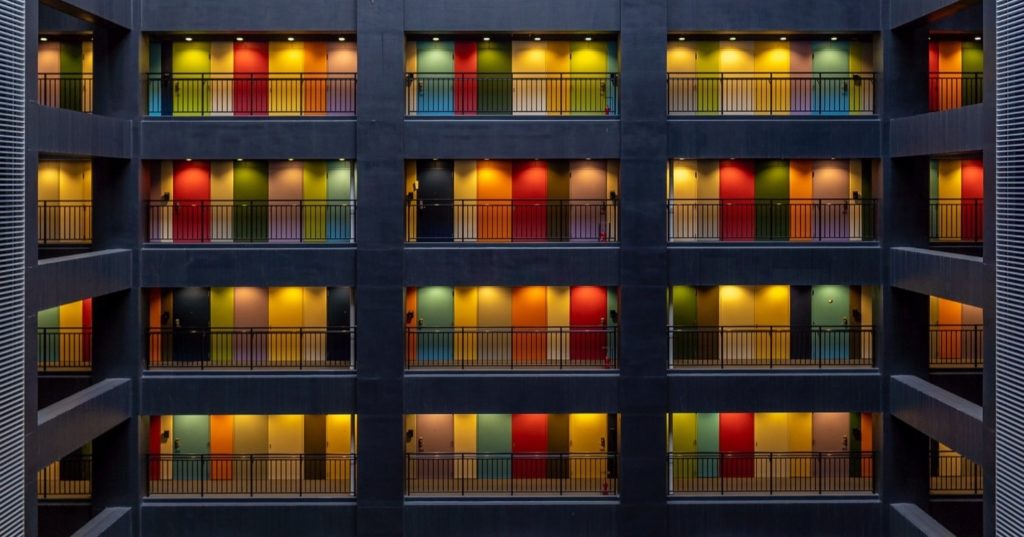The Relationship Between “Tech Addiction” and Urban Design

Over these past few years, there has been a lot of talk about smartphone and social media addiction. People spend hours a day with their faces staring at screens, leading to concerns about what they are missing out on while doing so. The target of this concern is often young people, with adults who grew up without such technologies criticizing them for staring at their devices instead of engaging with the real world. However, what tech critics often fail to address is that the reason why many young people use their devices with such frequency is because the real world fails to provide them with what they need.
As human beings, we share certain fundamental needs and desires. Food and shelter are the most basic and most well-known among them, however there are many others which must be satisfied in the pursuit of health and happiness. The two needs which are met by smartphones, the Internet and social media, are cognitive stimulation and social interaction. These needs are particularly high in young people due to the characteristic features of their developmental stage which is why they tend to use smartphones, video games, social media, etc. more actively than people in other age groups.
Notably, satisfying cognitive stimulation and social interaction needs is also something that must be done in order to design attractive and livable environments. When these needs are not satisfied by the world around us, it is normal for people to try to satisfy them in alternative ways. These days, this occurs through the use of technology.

When I say cognitive stimulation, I am talking about that which occurs when something captures our attention and interest. This can happen through the activation of the senses, emotions, or thoughts. Walking through a dense city street with its varied façades and storefronts, rich smells, symphony of sounds, complex textures, delicious tastes, and numerous things to observe and process creates plenty of cognitive stimulation. In such an environment, the brain is engaged and/or entertained constantly. However, many people around the world do not live in such cognitively stimulating environments.
In the United States suburbs for example, where half of the US population lives, there is little to see or experience when a person walks out of their home. The only things within walking distance are private homes and trees. Stores, restaurants and offices are big blank boxes that are far from residential districts and that you must drive to. In this kind of environment, there is little to see, think about, experience, or feel. The mind is not actively engaged. Often these environments are criticized for being boring, and with good reason. In such places, technologies like TVs, smartphones, laptops, video games, etc. become tools that are employed to help people achieve the desired levels of stimulation. Millions of apps, games and videos are available to feed the hunger that the built environment leaves unsatisfied.

Social interaction is another of our most basic human needs. Humans are social creatures. Since the beginning of time, we have lived in groups and this has ensured our survival, progress and well-being. When people do not interact with other humans on a regular basis, the consequence is often loneliness. Loneliness is a highly aversive emotional state that has been associated with various psychological problems such as anxiety and depression as well as physical problems such as increased likelihood of heart disease, stroke and cognitive decline. Livable cities and towns provide social spaces where people can gather, meet each other and enjoy each other’s company. These spaces can be cafés, parks, plazas, community gardens, and anywhere else that people can cross paths and linger together if they choose to. When social spaces are not readily available, social needs must be satisfied in other ways. Once again, this occurs through technology. Facebook, Instagram, Snapchat, TikTok, messaging, etc. are all screen-mediated methods that people use to interact with each other. Using them excessively suggests unfulfilled social needs which is often an indicator of unsatisfactory design in the built environment.
The primary objective of most people is to be happy. In order to help people achieve this goal, those who have the power to influence the world on a large scale such as governments, urban planners, etc. must consider the fundamental human needs and how they can be satisfied. Businesses such as tech companies have already figured it out – entertain people’s minds and activate their emotions, give them easy access to people they like, and they will interact more with the product. This same knowledge can and must be applied to the design of the environment that surrounds us. Design physical spaces which will please people’s senses, minds and emotions, create opportunities for them to easily and enjoyably spend time with their loved ones, and they will interact more with the world.

Our behavior and decisions are dependent on the opportunities that are available. For example, we cannot enter a house if it has no door, even if we want to. What’s more, if we grew up in a world where none of the buildings had doors to begin with, we might not realize that buildings can be entered at all. In simplest terms – if you want someone to enter a building, you must build a door. If you want people to behave in a certain way which you believe is good for them or good for the world at large, then you must create the opportunities for them to do so. If you want people to spend less time with technology and more time with each other or with nature or whatever the goal may be, then you must create the opportunities for those behaviors to occur. Not only that, but the opportunities must be easily accessible, convenient and enjoyable. If they are not, then the competition which is only a click away will win the race for people’s time and attention, and understandably so.




Recent Comments